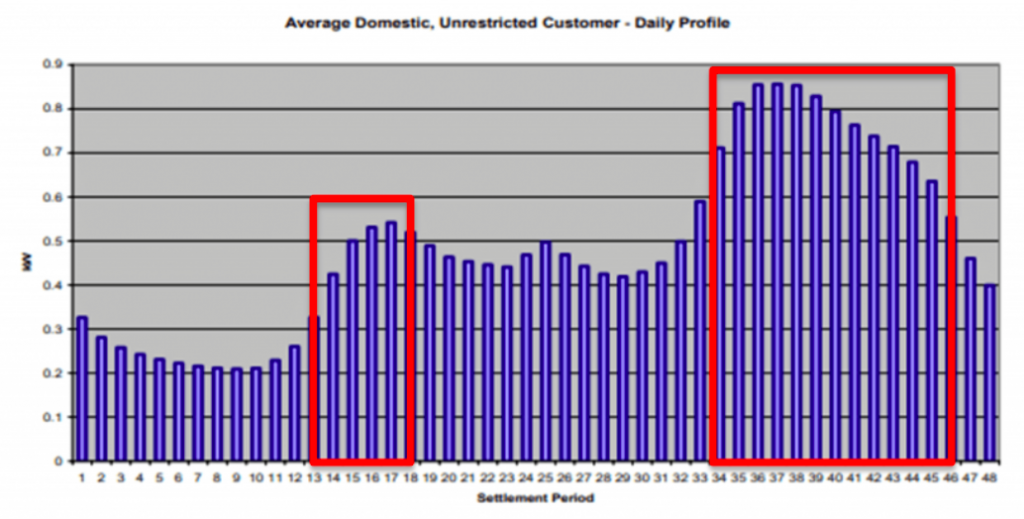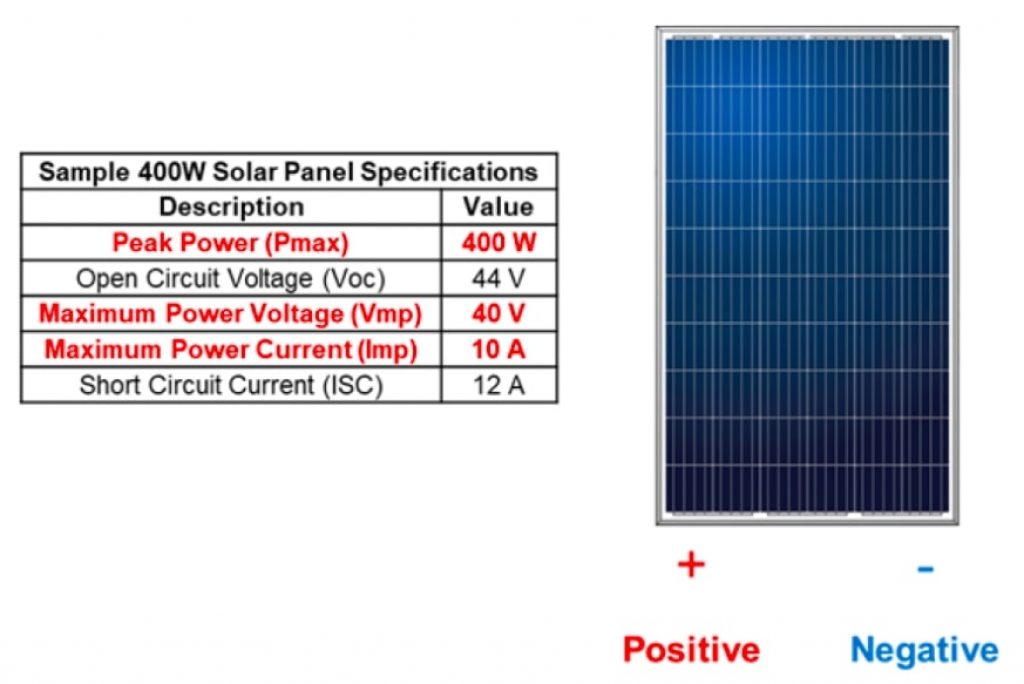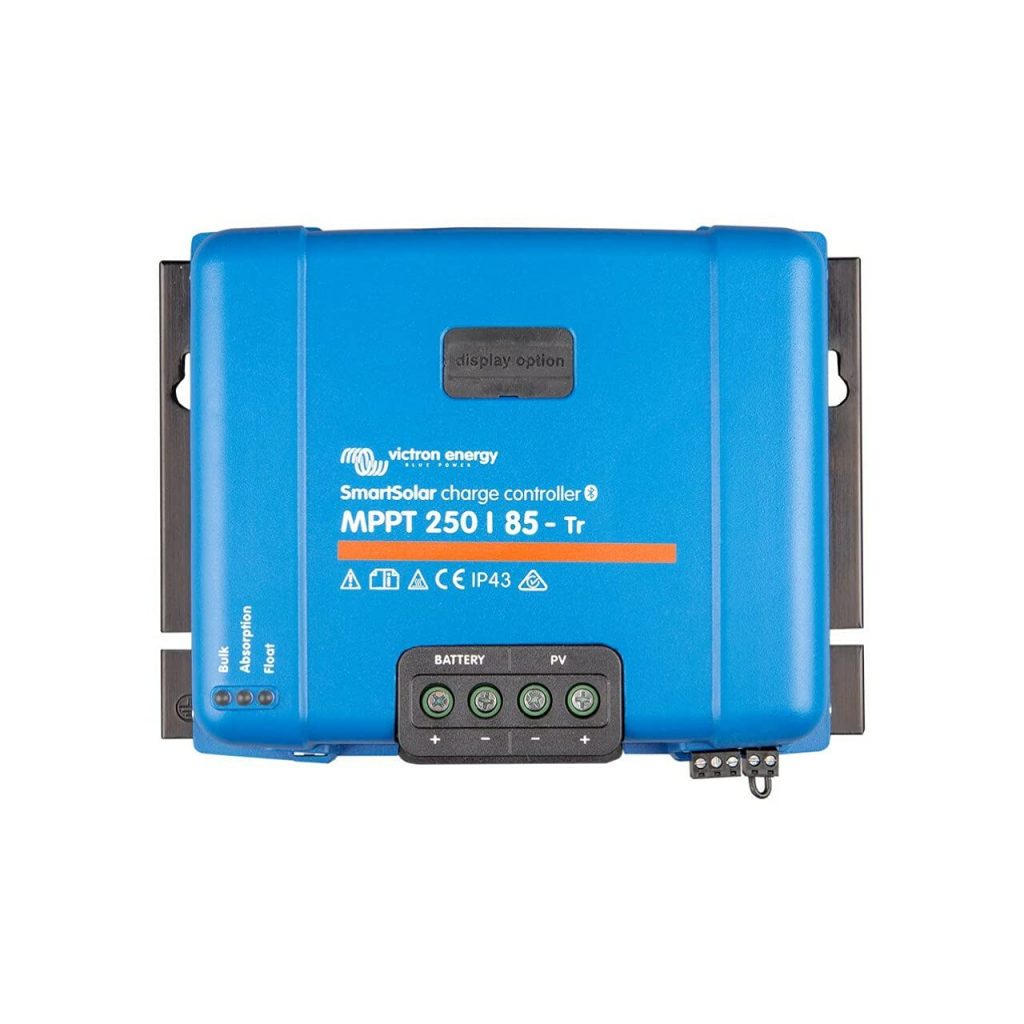Welcome to a comprehensive article on 10kW solar systems. We structured this article to provide a combination of general guidelines, procedures, and operating principles of PV systems.
Before we dive in, be aware that although this article contains neat guides and how-to’s on 10kW solar systems, we strongly encourage you to consult with solar experts and developers to verify the exact specs that fit your individual electricity needs.
Table of Contents
What Is A 10kW Solar System?
The term 10kW Solar System is self-explanatory. It is a solar panel system that can provide your dwelling with 10 kilowatts (kW) of power at peak production.
It behaves the same way as a 5kW solar system but has twice the capacity.
How Does A 10kW Solar System Work?
The answer lies with what is in your solar panels — solar cells or photovoltaic (PV). These convert solar power to electricity.
In each panel, manufacturers arrange together a set of solar cells. Depending on the number of cells in each panel and their corresponding efficiency, you can determine the basic rating of a solar panel. Therefore, this explains why we can describe solar panels by the number of cells in each panel (e.g., 60-cell types for residential homes).
Here’s how a solar panel works its free electricity magic — when sunlight hits your solar panel, the PV cells absorb the solar energy that wakes up and moves electrons via an electrical field within the solar cell. And by definition, the created flow of electrons is the usable electric current we use to run our devices at home.
You see, solar panels utilize the first law of thermodynamics, which states that:
Solar panels follow this law when capturing sunlight and transforming it into electrical energy via PV cells.
How Big Is A 10kW Solar System?
In terms of physical size, a 10kW solar system will take up about 594 to 950 sq. feet of real estate on your roof or yard, depending on the type of PV solar panels you have.
Here’s how we got those numbers:
Roof Size Calculation
There are two types of solar panels to choose from today. Monocrystalline solar panels are more efficient but are pricier at the same time. Alternatively, people with generous roof space can choose to go with polycrystalline.
Either way, we recommend a 60-cell solar panel configuration for residential setups. Each panel has a measure of around 39″ x 66″ (3.25 feet x 5.5 feet) or 1 meter by 1.7 meters.
However, remember that power production is dependent on the type and manufacturer specifications of the ones you bought. Therefore, two panels of the same size might have different power outputs.
PV panel power ratings typically fall between 250 watts and 400 watts. Simple arithmetic tells us that a 10kW solar system will require 25 to 40 panels.
Calculating the area of a 3.25′ x 5.5′ panel, you will get 17.875 sq. feet per panel. Multiplying this by 25 and 40, we get 446.875 sq. feet and 715 sq. feet, respectively.
Therefore, the range of the total roof space needed for a 10kw solar system is 446.875 sq. feet x 1.33 = 594.34 sq. feet for 25 panels and 715 sq. feet x 1.33 = 950.95 sq. feet for 40 panels.
Summary
Here is a table summarizing the process:
| Specifications | Lower Range | Upper Range |
|---|---|---|
| Solar Panel Rating | 400 watts | 250 watts |
| 60-cell panel size | 17.875 sq. feet | 17.875 sq. feet |
| Number of Solar Panels | 25 PV panels | 40 PV panels |
| Safety Factor | 1.33 | 1.33 |
| Total Roof Space Requirement | 594.34 sq. feet | 950.95 sq. feet |
Although we did calculate that your total solar roof requirement ranges from 594 sq. feet to 950 sq. feet, there is a chance that some of you will have a tight roof space allowance. In this case, we recommend paying a local solar professional as a consultant to help engineer solutions and assist you with detailed number-crunching.
How Much Does A 10kW Solar System Cost?
For those in a hurry, a 10 kW solar system will cost you about $27,100. A PV+Battery Storage setup will cost $20,225 + $27,100 = $47,325 according to NREL. On the other hand, Tesla quotes a similar setup for $30,294. These figures do not yet include Federal Tax Credit Incentives (FTC) that you might qualify for, depending on your solar project timeline.
Why is Tesla’s offer so much cheaper than the industry average? Read on.
Let’s start with the National Renewable Energy Laboratory (NREL) benchmark report.
NREL’s PV+Battery Cost Model
There is no definitive answer for solar system costs since their price fluctuates depending on numerous factors such as financing, state-specific factors, soft costs, and local financial incentives.
But the good news is that the brilliant guys from NREL figured out a way to give you a benchmark that applies to the US.
PV Cost Model
According to the 2020 NREL report, a residential PV rooftop system will cost you $2.71 per watt. We cross-referenced these figures with their 2018 report and found out that the price of residential solar installation has already stagnated. This is consistent with our previous analysis, which concluded that NOW is the best time to invest in solar panels.
Given the numbers, we can determine that a 10kW solar system in the United States will cost around $27,100.
Energy Storage Cost Model
As for the computation of energy storage cost, we got this NREL cost equation model that applies to battery systems that have capacities from 3kW up to 10kW and energy storage capacity of 4kWh up to 50kWh
To compare this apples-to-apples with the Tesla alternative later, let’s use the specifications of the Powerwall as our reference.
| Details | Tesla Powerwall |
|---|---|
| Price | $10,500 |
| Energy Storage Capacity | 13.5 kWh |
| Power Capacity | 5.6 kW |
| Warranty | Ten years |
Plugging in the Tesla Powerwall values into the equation, we get:
BESS cost (total $) = $1,690/kW * $5.6kW + $354/kWh * 13.5kWh + $5,982
BESS cost (total $) = $9,464 + $4,779 + $5,982
BESS cost (total $) = $20,225
Based on the math we just did, an energy storage add-on purchase similar to the Tesla Powerwall will cost you $20,225 on average.
Therefore, we can conclude that the average cost for a PV+Battery set up in the U.S. costs is about $20,225 + $27,100 = $47,325.
Tesla Solar Panel Plus PowerWall
On the flip side, a cost estimate for a Tesla Solar Panel Plus PowerWall is not that hard to get.
No complicated cost models. Just plug in your geographic and electric bill information, and their handy online calculator will do all the work for you.
To help you appreciate this feature, here is a sample quotation for a two-story home in the sunny state of Florida.

The figure above show’s that a Tesla solar plus storage package costs $30,294 before incentives.
Some of you might think, “That’s a lot cheaper than the industry average!”
Indeed. And we know why. Just recently, The big wigs over at Tesla decided that it was time to get their head in the solar energy game. This led to Tesla’s current strategy to slash a big chunk from its installation service price. In addition, Tesla is continuously working to make its solar panels more powerful.
This is why Tesla’s solar offerings are currently 30% below than industry average and gives Elon Musk a fighting chance against established solar developers like SunPower.
What Is The ROI Of A 10kW Solar System?
Now how long will it take for solar panels to pay themselves?
According to our analysis, a 10kW solar system without energy storage costs around $19,294 to $27,100.
To know how long it will take to get your money back, you need to know how much solar energy your 10kW solar system will produce annually. Consequently, solar energy production depends on your state’s average peak sun hours.

The good news is you don’t have to learn how to assess your home’s solar energy potential. Just plug in your location and other solar system information via NREL’s PV watts calculator, and you should receive your estimated annual solar energy production.
For example, if we were to install a 10kW solar system in Silicon Valley, San Jose, California, PVwatts estimates that the system will produce 16,026 kWh/Year.

Payback Period
According to the US Energy Information Administration (EIA), the electricity price in California is $0.2358 per kWh. This translates to $3,779 worth of savings annually.
So how long will it take for you to earn your solar investment back? Dividing $19,294 and $27,100 by $3,779 gives us a payback period falling between 5.1 to 7.2 years, respectively.
How Many Solar Panels Do I Need For a 10kW Solar System?
Our earlier analysis shows that residential PV panel power ratings typically fall between 250 and 400 watts. Therefore, simple arithmetic will tell us that a 10kW solar system requires 25 to 40 panels.
How Much Power Will A 10kW Solar System Produce?
Ideally, a 10kW solar system will produce 10 kilowatts of power. However, solar panel power output depends on certain factors, practically speaking. We touched on this before, but in summary, tilt angle, location, irradiation, and the direction your solar panels face affect the total system power output.
How Long Can A 10kW Solar System Power My Home?
There are two ways to answer this.
Method 1: Peak Sun Hours
First, we all know that solar panels require solar power to work. Therefore, knowing the number of peak sun hours is a simple but somewhat accurate way of estimating how long your 10kW solar system can power your home.

Method 2: Load Profile Analysis
The longer route involves some calculation and analysis. In reality, not all of us are home during the middle of the day to use solar electricity.
For example, the average residential load profile in the UK looks like this:

Analyzing the load profile above, we can observe that a typical household turn on their appliances from around 7 am to 8 am and from 5 pm onwards.
This means that the household behavior seen above doesn’t take full advantage of the peak solar power production during midday. If this sounds familiar to your case, then we recommend that you consider purchasing energy storage to offset your solar energy use in the evening.
However, we all know that battery energy storage units are pricey. Therefore, we recommend consulting an expert on energy storage sizing if you want precise numbers to optimize your ROI.
What Size Inverter Will I Need For A 10kW Solar System?
In general, your inverter size should match the DC rating of your solar panel system. Therefore, a 10kW solar system will require a 10kW inverter.
Most of the time, the statement above should work for DIY-ers. However, for professional solar installers, determining exact inverter sizes for optimal design requires a deeper analysis of other technical variables such as maximum power rate and DC to AC ratio.
What Size Charge Controller Do I Need For A 10kW Solar System?
We wish it were easy, but sizing controllers take some time to grasp.
Sizing your charge controller requires some analysis of two key parameters in your 10kW solar systems:
- Solar Charge Controller Maximum Voltage and Current Rating
- Battery Voltage and Current Rating vs. Solar Charge Controller
In a nutshell, the primary role of a charge controller is to maximize solar energy production and battery charging.
Solar Charge Controller Maximum Voltage And Current Rating
The solar charge controller voltage and current ratings determine how much voltage and current your controller can accept from your solar panel array.
A gentle reminder: if you find yourself confused by the computations and jargon being thrown around related to solar panel wiring configurations, we recommend you read up on how to wire solar panels first.
Recall that solar panels are wired in parallel and series modify the current and voltage going to the controller depending on the wiring configuration.
For example, if you have 25 400-watt solar panels for your 10 kW setup, it is possible to set them up as 5 sets of five (5) series-connected panels, all wired in parallel.
Sample Calculation
Now knowing that each panel has a rated voltage of 40V and 10A (see figure below) a five-panel series string will have a combined rating of:
V,array = 40V x 5 = 200V
I,array =10A
P,array = 400W x 5 = 2,000W
Subsequently, connecting 5 of these series in parallel will give us a total solar panel array rating of:
V,system = 200V
I,system = 10A x 5 = 50A
P,array = 2,000W x 5 = 10,000W
In conclusion, your solar panel array injects 200V with an operational current of 50A. In this case, we recommend the Victron SmartSolar MPPT Solar Charge Controller with Bluetooth – 250V, 85Amp.


View Price on Amazon.
Battery Voltage And Current Rating Vs. Solar Charge Controller
Now that we are sure that the charge controller can handle the voltage and current input coming from the solar panel array, it is time to harmonize this system with your battery.
The main concern for optimizing battery charging is ensuring that the battery voltage (12V/24V/36V or 48V) falls within the voltage range of the charge controller. In our sample 10kW solar system, the Victron controller we chose can accommodate any system voltage level.
The solar charge controller rated current, on the other hand, determines how fast it can charge your battery.
MPPT Vs. PWM
Some of our more knowledgeable readers may argue that PWM-type charge controllers are also a good, cheaper alternative to MPPTs. While there is some merit in scrutinizing MPPT vs. PWM charge controllers, we will stick with our guns and recommend MPPT controllers for large systems such as 10kW.
What Size Battery Storage Do I Need For A 10kW Solar System?
Sizing a battery unit depends on a couple of factors.
First, the solar system size is the primary basis of battery size since the amount of energy available for storing will come from the solar panels. Your energy consumption levels and usage patterns (Recall the previously discussed load profile concept) are also key considerations.
Therefore, sizing the battery storage for a 10kW solar system, in our opinion, is a “Goldilocks exercise.” It’s about finding the right size for you.
For us, it is best to seek multiple opinions and quotations from various experts and suppliers to know what is best for your needs, unless you want to learn the art of battery sizing yourself.
Can I Install A 10kW Solar System On A Single Phase?
In general, yes, you can. However, there are exceptional cases. Sometimes, accommodating a 10kW solar system will also depend on the existing infrastructures in your area and home and state-specific policies.
Therefore, please consider consulting an expert to be on the safe side.
Final Thoughts
There you have it! All you need to know about the 10kW solar system. Solar technology has already gone through the wringer for decades and is ripe for the taking. Solar panels will get cheaper, but it is not worth the wait.
Going for 10kW is a viable option for people with low peak sun hours and irradiance in their area. It is also suitable for off-grid cabins owners who want to maximize solar charging of their batteries. Regardless of your reason, 10kW solar systems are reasonable if planned correctly.

